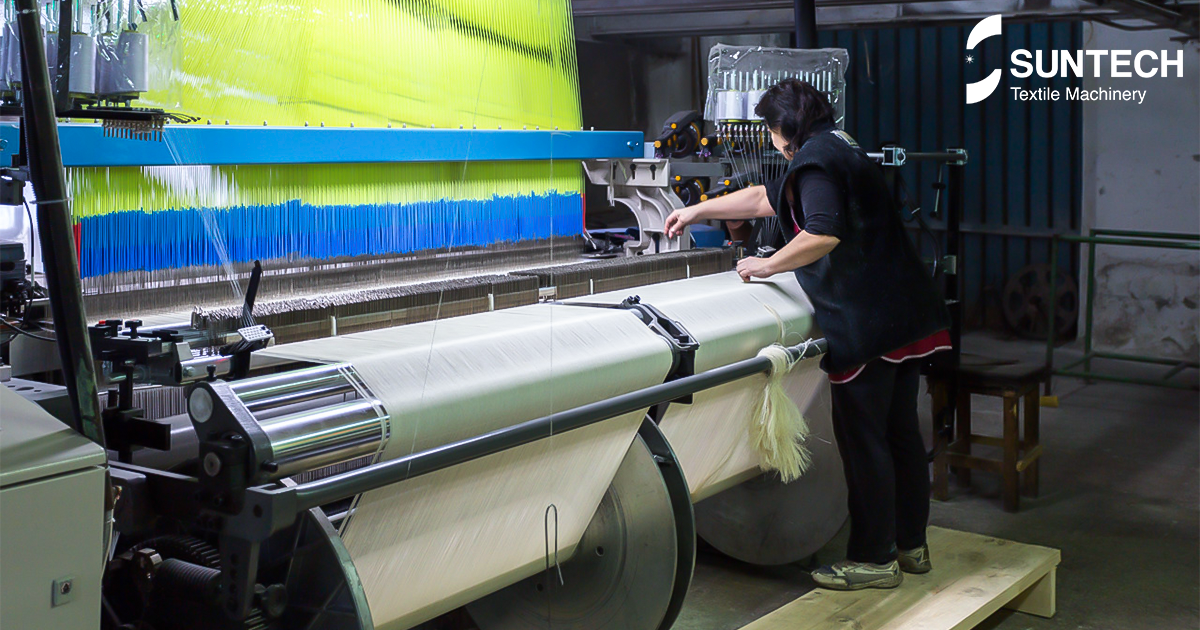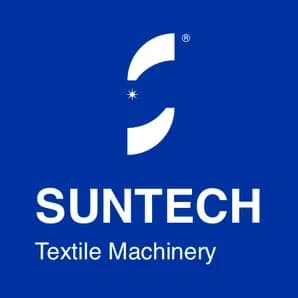
Ensuring the smooth operation and longevity of fabric inspection machines is crucial in textile manufacturing. This guide will provide effective strategies for operating and maintaining these intricate devices. We’ll also touch on the different types of fabric inspection machines available, setting the stage for a deeper understanding of their management.
Understanding Your Fabric Inspection Machine
A. Key Components and Their Functions
A fabric inspection machine comprises several vital components crucial for its operation, each serving a specific function to ensure efficient and accurate fabric inspection:
● Unwinding and Rewinding Mechanisms: These components manage the fabric's movement through the machine, ensuring it unrolls and re-rolls smoothly without causing tension or damage to the material.
● Inspection Table: A flat surface, often illuminated, where the fabric is spread out for examination. The lighting helps identify defects and inconsistencies in the fabric.
● Light Source and Lighting Components: Essential for providing adequate illumination, these elements are critical for spotting defects and ensuring quality control during the inspection process.
● Coding Apparatus: Used for marking defects directly on the fabric or tagging areas that require attention, facilitating further processing or repairs.
● Fabric Finishing Setup: Adjust the fabric to ensure it is in the proper state after inspection and ready for further processing or packaging.
● Initiating, Reversing, and Braking Systems: These control the start, direction, and stop mechanisms of the machine, crucial for handling the fabric gently and efficiently.
These components work together to facilitate a seamless inspection process, from the initial fabric input to the final roll output, ensuring each fabric batch meets quality standards.
B. Specifications and Capabilities
Fabric inspection machines are designed to accommodate various fabric types, each with different specifications and capabilities. Key specifications typically include:
● Fabric Width Capacity: Machines can handle different fabric widths, typically up to 65 inches, allowing for the inspection of various fabric sizes.
● Machine Speed: Variable speeds up to 15 meters per minute, accommodating different inspection needs and fabric types.
● Operational Features: Include tensionless handling, accurate length measuring, and appropriate illumination, which are crucial for maintaining fabric quality during the inspection process.
Understanding these specifications is essential for optimizing the machine's use and ensuring it meets the specific needs of your textile production.
C. Initial Setup and Calibration
Proper setup and calibration of a fabric inspection machine are fundamental to achieving reliable inspection results. Here are key steps to ensure your machine is set up correctly:
● Installation Check: Ensure the machine is installed level and stable, with all components securely fastened and aligned.
● Calibration of Sensors and Systems: Calibrate light sources, sensors, and measurement systems to match the specific types of fabric you will be inspecting. This step is crucial for accurate defect detection.
● Test Runs: Conduct several test runs with different fabric types to verify that the machine settings are correctly adjusted and the system is accurately identifying defects.
Regular calibration and maintenance are crucial to maintaining the accuracy and reliability of the fabric inspection process, thus ensuring that your textile products meet quality standards.
Operating Procedures for Fabric Inspection Machines
A. Starting the Machine
To ensure a smooth start-up, the first step involves a meticulous check for any obstructions that could interfere with the machine's operations. This includes checking the machine’s path and surroundings. It’s also vital to verify that the settings are appropriately adjusted for the specific type of fabric to be inspected, considering factors such as fabric weight and texture.
B. Best Practices for Daily Operation
Maintaining a routine is key in daily operations to guarantee consistency and high-quality outputs. Operators should strictly adhere to a standard operating procedure that includes pre-start checks, regular monitoring during operations, and post-operation reviews. This structured approach helps minimize errors and keep the machine in optimal condition .
C. Handling Different Fabrics and Inspection Requirements
Different fabrics require tailored handling techniques due to their unique properties. For instance, delicate fabrics like silk might need lower tension and gentler handling to prevent damage, whereas more robust fabrics like denim can endure higher tension levels. Adjusting machine settings according to fabric specifications is crucial to prevent damage and ensure thorough inspection .
D. Safety Protocols
Safety protocols are critical in ensuring the well-being of operators and the proper functioning of the machine. Operators should wear suitable personal protective equipment based on the operational environment and machine specifications. Regular safety training and adherence to safety guidelines are essential to mitigate any risks associated with the operation of fabric inspection machines .
These operating procedures are designed to ensure that fabric inspection machines run efficiently and safely, thereby enhancing productivity and maintaining high standards of fabric quality.

Routine Maintenance
A. Maintenance Checklists
Implementing detailed checklists for daily, weekly, and monthly maintenance can drastically reduce machine issues and enhance longevity. Here's a concise approach:
● Daily: Check for any visible wear or damage, ensure all moving parts are free of obstructions, and confirm settings are adjusted for the day's fabric types.
● Weekly: Inspect belts, filters, and electrical connections for signs of wear or fatigue. Test safety systems like emergency stops and guard sensors to ensure they are functioning correctly.
● Monthly: Conduct a thorough review of all major components, such as motors, gears, and bearings; lubricate moving parts and calibrate sensors and measurement tools to ensure accuracy.
B. Cleaning and Lubrication
Regular cleaning and lubrication are essential for optimal machine performance. Ensure that the machine surfaces are free from dust and fabric lint daily. Use manufacturer-recommended lubricants to maintain the smooth operation of moving parts. This practice not only extends the machine’s life but also maintains its efficiency and reliability .
C. Wear and Tear
Frequent inspections can identify early signs of wear and tear, preventing costly repairs. Key areas to monitor include the feeder mechanism, inspection table surfaces, and roll-up devices. Look for uneven wear patterns, check for any loose components, and listen for unusual noises that could indicate internal issues. Addressing these early can save significant time and resources later.
D. Software Updates
Keeping your machine's software updated is crucial for ensuring it operates with the latest improvements and bug fixes. Software updates can also introduce new features that improve fabric inspection accuracy and speed. Schedule regular checks for software updates and apply them during periods of low production to minimize downtime .
By adhering to these maintenance protocols, you can ensure that your fabric inspection machine remains in peak condition, reducing downtime and maintaining high standards of fabric quality.
Troubleshooting Common Issues
A. Common Problems
Recognizing early signs of common problems, such as misalignment or software errors, is crucial. For instance, the noisy operation often indicates worn-out components like bearings or suspension systems and can be resolved by ensuring the machine is properly leveled and free from foreign objects . Regular visual inspections for misalignment and listening for unusual noises can help identify these issues early, simplifying the resolution process and minimizing the impact on production.
B. Troubleshooting Guide
A systematic approach to troubleshooting involves several key steps:
● Initial Checks: Verify that there are no obstructions and that the machine is configured correctly for the type of fabric being inspected.
● Component-Specific Inspection: For mechanical issues, like uneven feed dog movement, check for misalignment or wear and tear and ensure cleanliness. For software glitches, restart the system or check for updates .
● Testing and Adjustment: After making adjustments, run the machine to test if the issue persists. Adjust settings incrementally and observe the effects.
C. Professional Help
Knowing when to call in a professional is essential, especially for complex issues that surpass basic troubleshooting capabilities. If initial troubleshooting does not resolve the issue, or if there are signs of serious mechanical failure, professional intervention is necessary to prevent further damage . Always consult with certified technicians who specialize in fabric inspection machines to ensure accurate diagnosis and repair.
By maintaining a vigilant approach to troubleshooting and not hesitating to seek professional help when needed, you can keep your fabric inspection machine in optimal working condition, ensuring consistent performance and longevity.
Optimizing Fabric Inspection Machine Performance
A. Fine-Tuning Settings
Fine-tuning the settings of your fabric inspection machine is crucial for handling various fabrics effectively. This involves adjusting parameters such as tension, speed, and lighting based on the fabric's characteristics. For instance, lighter fabrics may require lower tension and slower speeds to prevent damage, while heavier fabrics might handle higher settings. Implementing precise settings not only enhances the quality of the inspection but also reduces waste, ensuring that materials are utilized efficiently .
B. Upgrades
Upgrading your fabric inspection machine can significantly boost its functionality and extend its lifespan. Modern machines often incorporate advanced sensors and software that improve defect detection accuracy and processing speed. For example, some systems use cameras and light technology tailored to specific fabric types, allowing for more precise inspections. Additionally, upgrading to systems that offer features like UV/IR ink marking for defect identification or customized integration options can provide substantial operational improvements .
C. Preventative Maintenance
Implementing a robust preventative maintenance schedule is key to minimizing unplanned downtime and maintaining machine efficiency. This includes routine checks and the replacement of worn-out parts before they fail. For instance, regular calibration and cleaning of sensors and optical components can prevent performance degradation over time. Automating some of these processes, where possible, can ensure consistency and reliability, helping to keep the machine in optimal condition .
By focusing on these aspects, you can significantly enhance the performance and reliability of your fabric inspection machine, ensuring that it meets the demands of modern textile production environments.
Training Operators and Staff
A. Essential Skills
For fabric inspection machine operators, mastering both mechanical and software aspects of the machinery is vital. This includes understanding how to manipulate machine settings for different types of fabric and troubleshooting common technical issues. Operators should also be adept at using software that controls the machine, interprets its outputs, and integrates with quality management systems to ensure fabric quality .
B. Training Programs
Developing effective training programs for operators should combine both theoretical knowledge and practical, hands-on experience. Programs should cover the fundamentals of machine operation, safety protocols, quality standards, and maintenance procedures. Incorporating real-world scenarios and simulations can greatly enhance learning and retention. Utilizing advanced training tools, like digital interfaces and simulation software, can provide operators with a more interactive and engaging learning experience.
C. Certification and Education
Encouraging ongoing education and certification for machine operators not only improves their performance but also their job satisfaction and career growth. Certifications can be in areas such as technical machine operation, quality control, and advanced maintenance. Providing access to continuing education—whether through in-house training, online courses, or workshops—helps operators stay updated on the latest technologies and practices in fabric inspection .
Incorporating these elements into your training program can lead to more knowledgeable and effective operators who are capable of handling the complexities of modern fabric inspection machinery efficiently.
Conclusion
We’ve covered comprehensive strategies for maintaining and optimizing your fabric inspection machine. Implementing these practices will not only prolong the life of your machine but also enhance its performance. Regular maintenance, combined with a proactive approach to troubleshooting and optimization, will ensure your fabric inspection operations run smoothly and efficiently.








